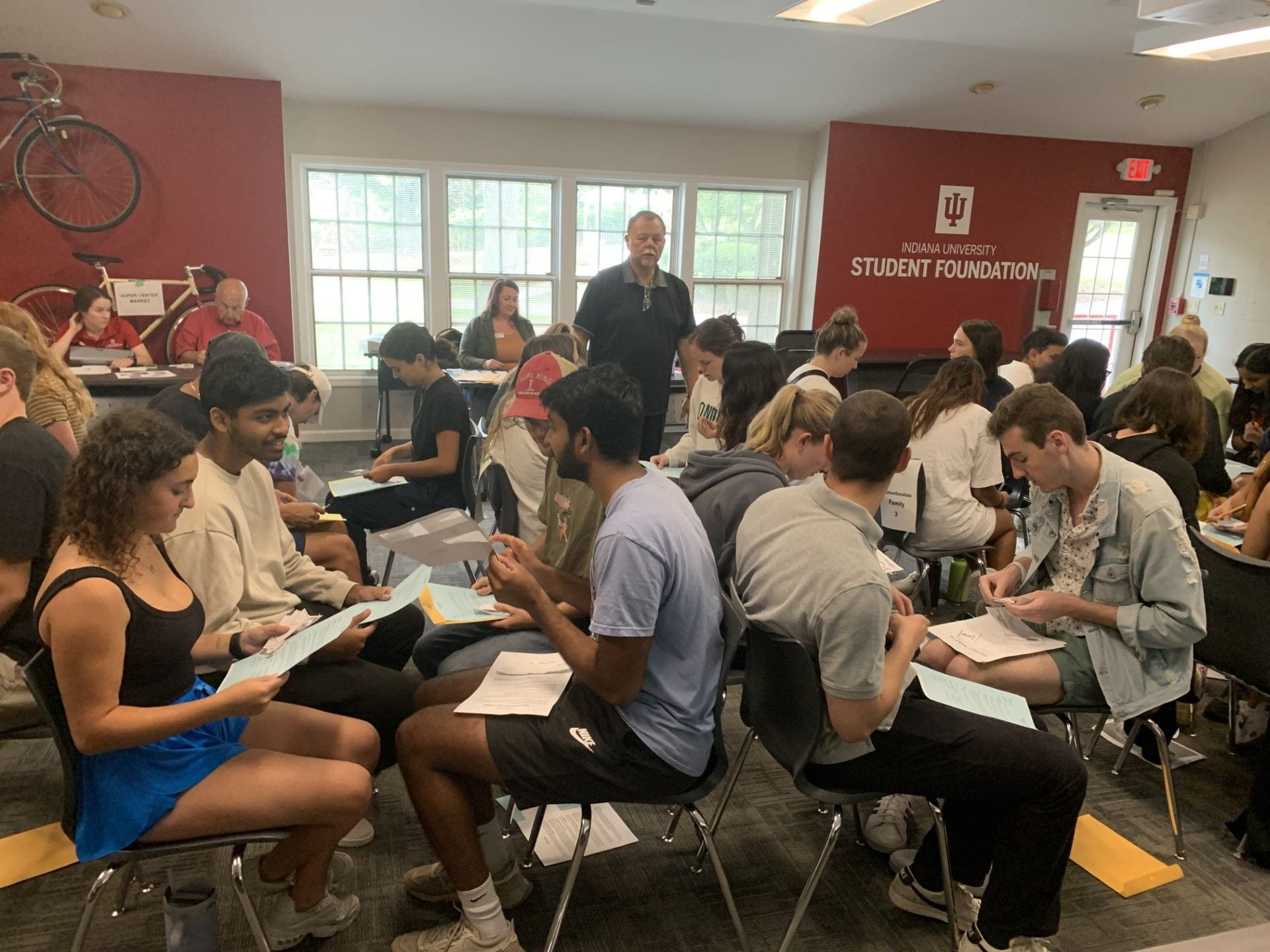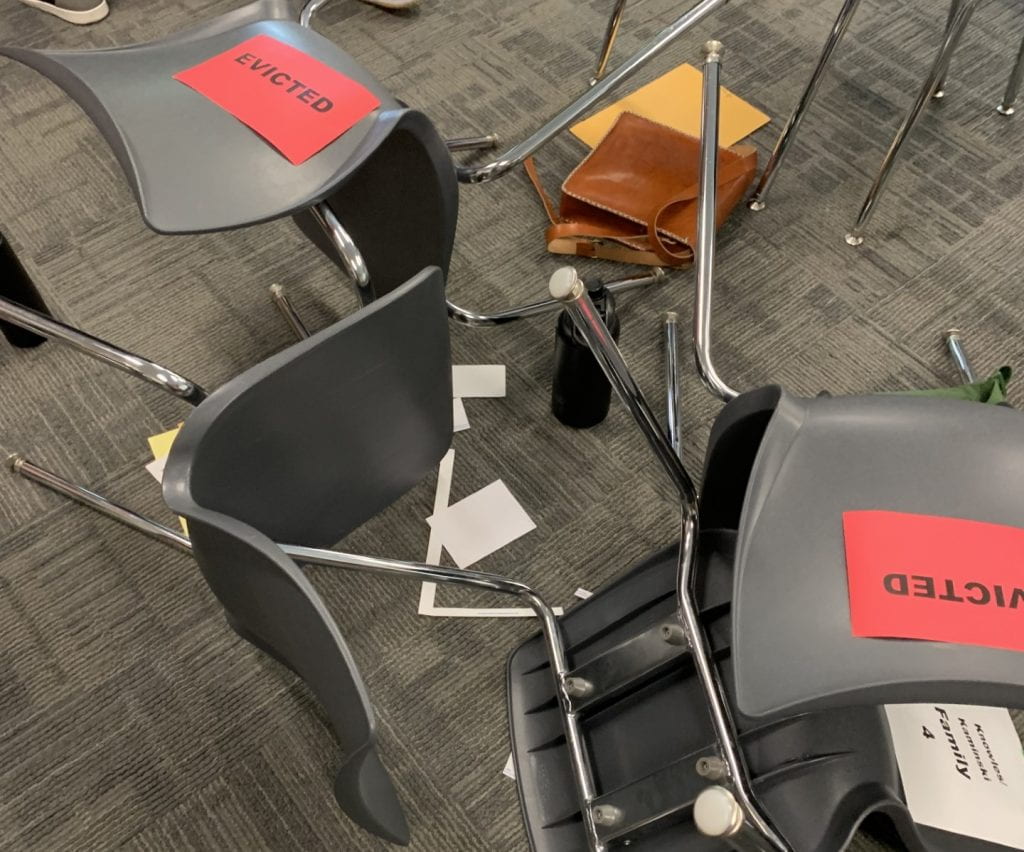Written by Julianne Hatcher, Environmental Sustainability/International Studies, Class of 2024
Each fall, Professor Kelly Eskew hosts a poverty simulation to help students better comprehend the realities of poverty for American families. I was a part of this educational demonstration during my time in Professor Eskew’s Business and Poverty Alleviation course.
Our class had been exploring the complicated intersections between poverty and business throughout the semester to better understand solutions to the poverty crisis. We brought this intersectionality to life through the poverty simulation, an interactive experience that touches on the difficulties of maintaining a family while living below the poverty line.
The demonstration was exceptionally powerful for me and my peers. The simulation begins by grouping students into nuclear families and giving them a file on their family dynamic and income. Students are then given an allotted amount of time – four 12-to-15 minute “weeks” – to meet the needs of their family through interactions with employers, the government, and themselves.
Students were asked to go to work, if able, provide childcare and balance the other stressors of life. Booths were set up around the room providing a variety of lackluster services that seemed to cause more frustration than they alleviated. Many of these services including a welfare office, bank, grocery store, pawn shop, and more required transportation and often were unable to help families. The actors did an exemplary job highlighting the barriers many real families face when attempting to access services and pay for groceries, utilities, and other necessities for a healthy and dignified life.
This was then coupled with the need to maintain social relations with your kids and spouse. In particular, my group had a burdensome lack of transportation that led to several miscommunications. For example, I remember coming back home to my “husband” only to find out we both went grocery shopping and wasted most of our money since we did not have time or gas to come home and realize what we had done until it was too late. This error set us back the rest of the exercise.
Our facilitator, Ron Duncan, did an excellent job building the stress and keeping us aware of how vital it was to provide for their families, even as students began to get frustrated. His guidance kept us engaged, reminding us that, while this was a simulation for us, it is the reality for many people in the United States today.

Ron Duncan leading the poverty simulation
Ron’s explanation that the case files we had been given were modeled after real families was a startling realization for me and many of the other students. Throughout our time in the simulation, we became stressed, and many students were laughing at their own frustration. However, following the chilling revelation that this was daily life for real people, most of the room fell into an embarrassed silence. Students seemed shocked that the pure anxiety and heartache they had grown so exhausted with, in less than an hour, could be a typical feeling for many people in poverty. As Ron said, “You are the best and the brightest, and you fell apart in an hour. Imagine this as a daily reality.”

Family evicted in the simulation
Looking back to my earlier example of how my group accidentally bought groceries twice, I was hit with the startling realization that one mistake can be a devastating cost to a family in poverty. Others failed to pay rent or utilities, leading to disconnections and evictions. Throughout our course, we discussed many aspects of poverty, including the risks a low-income family can face, but I was unable to actualize this until the simulation. This hands-on experience aided me and the others in understanding the humanity of the statistics we had learned about. This interactive lesson pushed us to remember that the cases we studied in class represent real people and the solutions we were discussing needed to be catered to those people.
Overall, this simulation is not only powerful, but important. This experience brought together dozens of students to think critically about poverty in the U.S. and how poverty may fluctuate in times of a changing climate, policy changes, and more. We send a special thank you to Ron Duncan and the other volunteers who helped orchestrate this simulation.
Leave a Reply